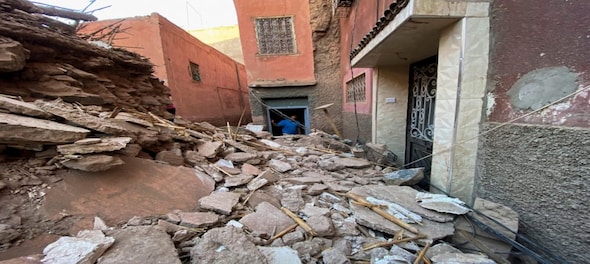
A series of shallow earthquakes has the potential to strike the Pacific Northwest of the US with similar devastating force to the San Francisco quake of 1906, or the catastrophe that killed tens of thousands of people in Turkey and Syria in February, according to scientists.
Researchers from the University of Arizona examined the rings of ancient and submerged trees to determine that several quakes that struck the western Washington region about 1,000 years ago — known as the millennial cluster — occurred either simultaneously to produce an estimated 7.8 magnitude quake, or in rapid succession, such as the powerful back-to-back temblors that devastated parts of the Middle East.
Until now scientists had not been able to pinpoint the dates between the various fault ruptures, which they suspected could have been decades or even centuries apart. But by comparing rings within living trees with those inside stumps submerged by lakes formed during the seismic events on the Seattle Fault and the Saddle Mountain Fault, they found that the quakes were likely linked, taking place late in the year 923 or early 924.
And that, researchers say, means the potential is there for a repeat event in an area which includes the cities of Seattle, Tacoma and Olympia, that is now home to some 4 million people.
“The evidence showed us that these trees from across the region died together, and this was in fact a linked event,” said the paper’s author Bryan Black, an associate professor of dendrochronology at the University of Arizona’s Laboratory for Tree-Ring Research.
“We’ve taken uncertainties around these two faults that used to span decades or centuries and narrowed it down to within one season,” Black said. “It's a much different scenario if we have earthquakes on these two faults separated by 100 years versus 100 hours. Demonstrating that these faults can rupture synchronously or in very rapid succession has really changed what we understand about the hazard in the region."
Black cautioned that current quake models do not take into account the possibility that shallow fault activities in the area could be linked, either by underground connections or through the transfer of stress from one to another, which has implications for engineering design and policies. For example, a second quake could provide the “knockout punch” that ends up destroying water mains and roads and triggering landslides and tsunamis.
First Published: Sept 30, 2023 11:31 AM IST
Check out our in-depth Market Coverage, Business News & get real-time Stock Market Updates on CNBC-TV18. Also, Watch our channels CNBC-TV18, CNBC Awaaz and CNBC Bajar Live on-the-go!


In Andhra Pradesh's silk hub, weavers' cry for help echoes through election season
May 3, 2024 12:24 PM
Feroze Gandhi to Rahul Gandhi: Rae Bareli's tryst with Congress
May 3, 2024 11:36 AM
Rahul Gandhi to contest from Raebareli, close aide KL Sharma from Amethi
May 3, 2024 8:39 AM
BJP's Hindi heartland dominance faces test in phase 3 polls
May 2, 2024 9:14 PM

